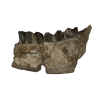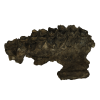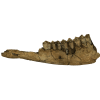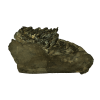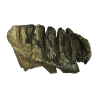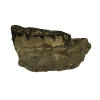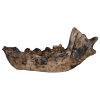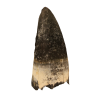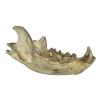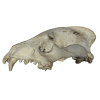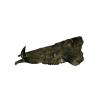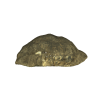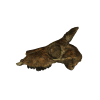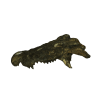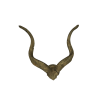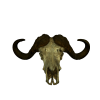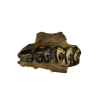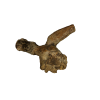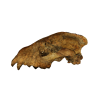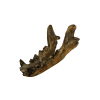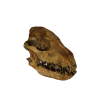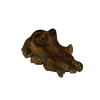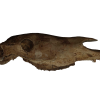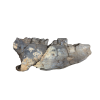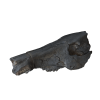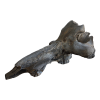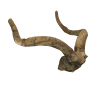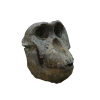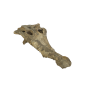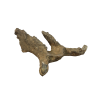This fossil skull of a Black Rhino (Diceros bicornis) was discovered in 1970 near Ileret at East Turkana. The fossil is ancestral to the modern black rhino which is native to central and east Africa. The black rhinoceros is a browser and feeds mainly on leaves rather than grasses, which is the prefered diet of the white rhino (Ceratotherium simum). The black rhinoeros is sometimes referred to as the hook lipped rhino as it has a prehensile upper lip. Only one species of Diceros occurs in sub-Saharan africa today.
Ancestors of both the black and the white rhinoceros were present in east Africa by 10 milion years ago and shared a common ancestor, Ceratotherium neumaryri. The black rhinoceros evolved from the species Diceros praecox during the late Pliocene. The earliest Diceros from the Turkana Basin is D. praecox from the Apak Member at Lothagam (5.0-4.2 ma).
This skull KNMER 636 is one of the first relatively complete fossil black rhino skulls ever collected and is the best early representative of this species. It is very similar to that of modern examples of D. bicornis.






